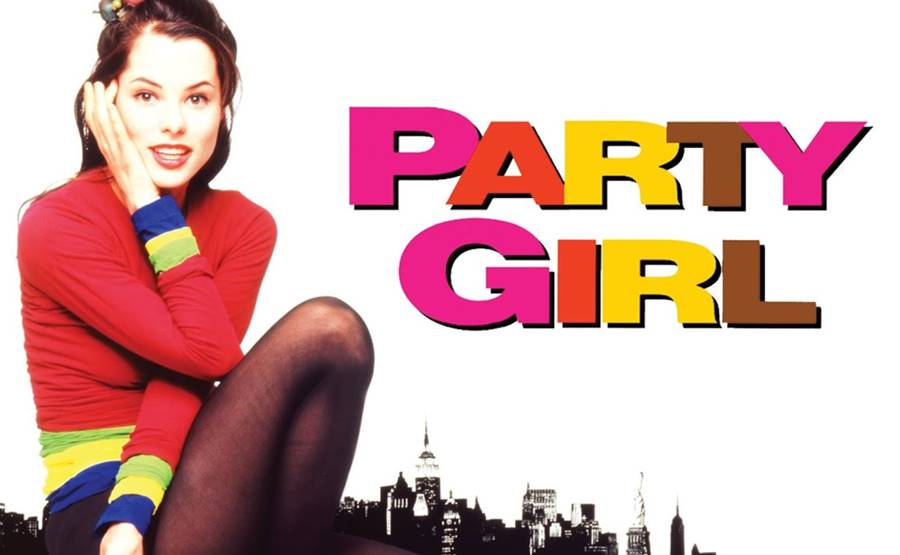
By Jae-Ha Kim
Chicago Sun-Times
July 9, 1995
In “Party Girl,” director Daisy von Scherler Mayer introduces viewers to Mary – a gorgeous club kid who gets the designer clothes she wants, but can’t afford, by stealing them from her friends’ closets. It quickly becomes apparent that besides throwing bitchin’ “rent” parties to fund her hedonistic lifestyle, Mary has no other visible
means of income.
Mary doesn’t sound much like Mayer, whose persistence and ambition led her to having her first feature film released while she’s still under 30.
“When Daisy was 12, she told me that she was going to be a director and that I would have to audition for her films,” said her mother, actress Sasha von Scherler, who plays Mary’s stiff-lipped godmother, Mrs. Lindendorf. “I chased her around with a broomstick and said, `Not till you’re 18!’ ”
“I’ve definitely always had goals,” said Mayer, 28. “I did my time in the club scene, but I never really immersed myself into it the way Mary and her friends do. I would categorize myself as Party Girl’s friend. Mary is a certain kind of `It’ girl that I wouldn’t say I was. Now Parker Posey is, which is why she was perfect for the
role.”
The petite, 26-year-old Posey indeed is film’s latest “It” girl. Her appearances in fashion spreads promoting “Party Girl” helped generate a strong buzz for the film (now playing in local theaters), as did her compelling performance in Richard Linklater’s “Dazed and Confused.”
“I’m thrilled and surprised that it’s got a buzz,” Mayer said. “We didn’t set out for this film to be a star vehicle. We weren’t that savvy. We just wanted to tell this girl’s story. But the fact that Parker’s so wonderful in it and that people just seem to like her makes it so much easier to get coverage of the film.”
If Posey is the movie’s hero, then von Scherler as Mrs. Lindendorf is the anti-hero. A lifelong librarian, Lindendorf looks down on Mary and her friends and their lifestyle. During an early confrontation, Mary decides to work as a library clerk to prove to her godmother that she is competent and capable of holding down a
normal job.
The role of Mrs. Lindendorf is dour, and not very sympathetic. Though what she stands for – stability, responsibility, adulthood – isn’t a bad thing, what she has become – crotchety, cranky and unforgiving – is. But von Scherler brings a human element to her character that saves Lindendorf from becoming a stereotype.
For von Scherler, who made her stage debut in 1955, acting now is a part-time career. A psychotherapist and social worker who helps people with AIDS, von Scherler said she is limiting her roles to her daughter’s projects.
“It was so much fun to work with Daisy because she’s such a good director,” von Scherler said. “I’m sure it was fun for her to be able to boss her mother around a little bit, too. It was kind of funny because she sent me off to the hairdresser with a snippet of her hair and I was supposed to get my hair colored the same way. I told the hairdresser that I didn’t know if that’s what I wanted, and he said, `That’s what the director wants,’ so I got that unnaturally yellow hair that Daisy likes.”
“(Co-writer) Harry (Birckmayer) and I wrote the part for her,” Mayer said. “My mother is an amazing woman and actress, and I knew that she could bring depth to the character. She has always defied stereotypes. She even kept her maiden name after she married my father, and that wasn’t something that was done in her day. I come from a line of strong women.”
Mayer also has a strong lineage when it comes to talented actors and writers. Her father, Paul Avilo Mayer, created the ABC soap opera “Ryan’s Hope.” Her grandfather, Edwin Justus Mayer, was a Broadway playwright and screenwriter. Her maternal grandmother, Ruth Dayton, was an actress and a journalist. One elder sister, Ruth Mayer, is a free-lance journalist; her other elder sister, Rachel, is a social worker and poet.
A graduate of Wesleyan University, Mayer said the role of “Party Girl” isn’t based on one person, but a conglomeration of men and women she met in New York.
“I was trying to capture that coming-of-age period in New York,” Mayer said. “I think of Mary as being not from Manhattan but as someone who’s moved there and is trying to recreate herself in the big city. I wrote the script as a coming-of-age story from a woman’s point of view, because so many of these movies are told from a man’s viewpoint. I think everyone knows at least one party girl or boy. The story’s pretty universal.”





